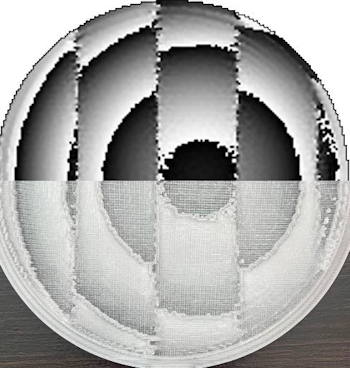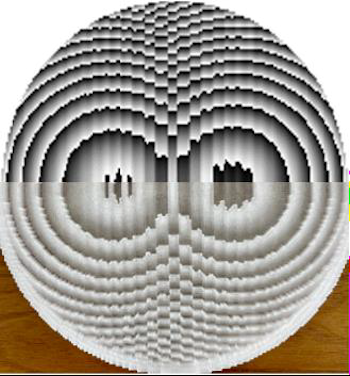3D printed THz MIMO diffractive structures
Mateusz Kałuża
supervisor: Ryszard Piramidowicz
The development of telecommunication systems requires fast, wireless signal transmission. One of the possible solutions is a multiple-input multiple-output (MIMO) system for the terahertz (THz) radiation range, which significantly increases the optical channel data transfer ratio. The MIMO system can be realized using two diffractive optical elements (DOEs): multiple-input single-output (MISO) used for coupling (multiplexing) of the THz radiation and single-input multiple-output (SIMO) for demultiplexing of THz radiation.
SIMO and MISO structures were designed using the iterative ping-pong algorithm, known from computer-generated holography. SIMO and MISO holograms in the form of the grey-scale bitmap are presented in Fig. 1a and Fig. 2a.
Fused deposition modeling (FDM) technology was used in the manufacturing process of structures. Our research and material measurements show that in the THz radiation range, some polymer materials like Cyclic Olefin Copolymer (COC) or Styrene Butadiene Copolymer (SBC) have desired optical properties and can be used in the manufacturing of phase structures. The fabricated SIMO and MISO structures are shown in Fig. 1b and Fig. 2b.
The obtained simulation and experimental results indicate on correct performance of both structures. MISO structure combines and focuses incoming off-axis radiation on the optical axis. SIMO structure splits radiation asymmetrically to the optical axis, which can be applied in time-division multiplexing.
 Fig. 1 FSIMO structure, a) phase distribution generated with iterative algorithm, b) lens fabricated with FDM 3D printing technique from COC material. |  Fig. 2 MISO structure, a) phase distribution generated with iterative algorithm, b) lens fabricated with FDM 3D printing technique from SBC material. |